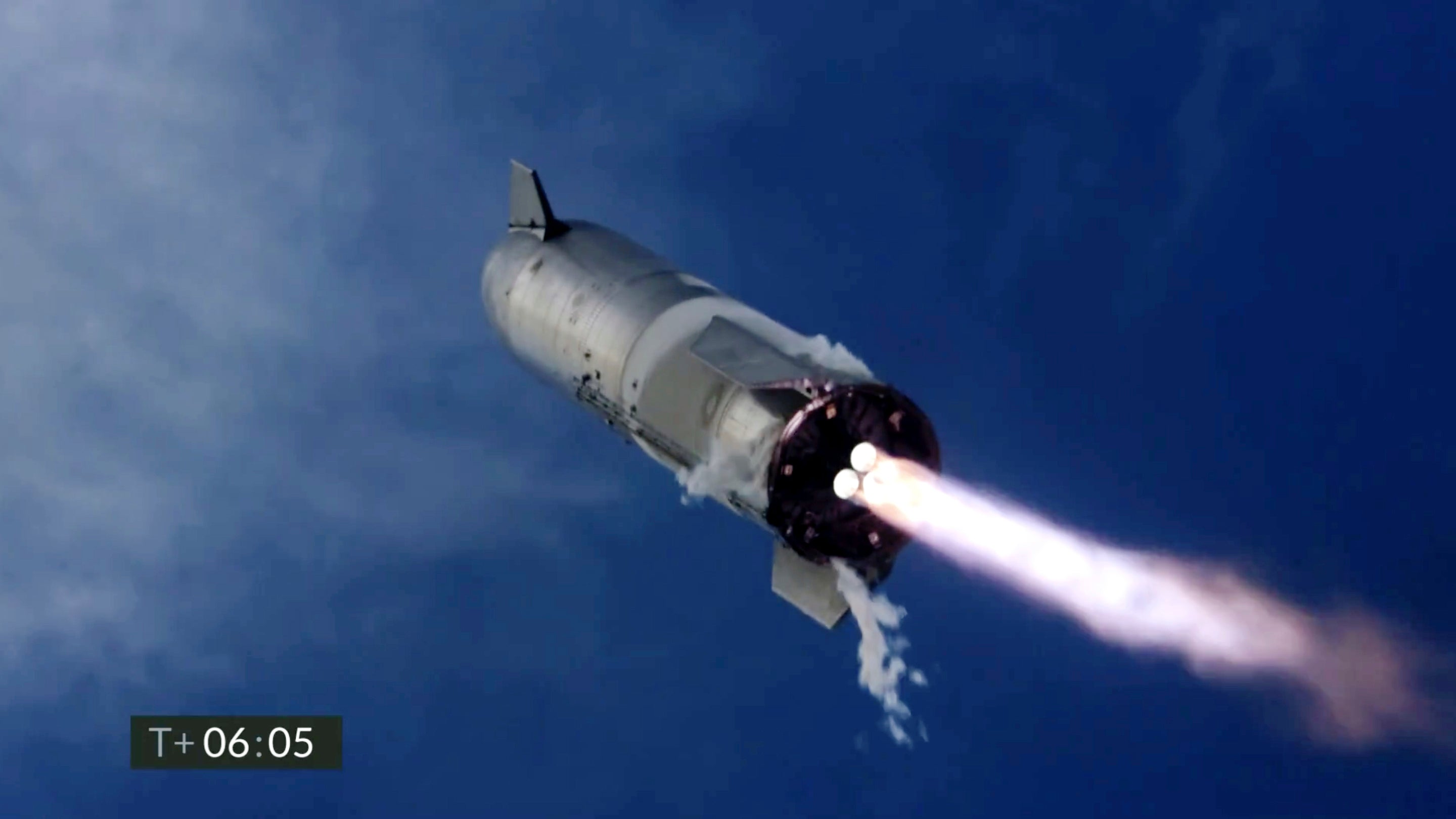'3rd time's a charm': SpaceX Starship nails landing in test
SpaceX's futuristic Starship has finally aced a touchdown after two previous tries ended in massive fireballs

Your support helps us to tell the story
From reproductive rights to climate change to Big Tech, The Independent is on the ground when the story is developing. Whether it's investigating the financials of Elon Musk's pro-Trump PAC or producing our latest documentary, 'The A Word', which shines a light on the American women fighting for reproductive rights, we know how important it is to parse out the facts from the messaging.
At such a critical moment in US history, we need reporters on the ground. Your donation allows us to keep sending journalists to speak to both sides of the story.
The Independent is trusted by Americans across the entire political spectrum. And unlike many other quality news outlets, we choose not to lock Americans out of our reporting and analysis with paywalls. We believe quality journalism should be available to everyone, paid for by those who can afford it.
Your support makes all the difference.SpaceX’s futuristic Starship finally aced a touchdown Wednesday after two previous tries ended in massive fireballs.
The full-scale prototype soared more than 6 miles (10 kilometers) after lifting off from the southern tip of Texas. It descended horizontally over the Gulf of Mexico and then flipped upright just in time to land.
This time, the shiny bullet-shaped rocketship remained intact, prompting SpaceX commentator John Insprucker to declare, “third time’s a charm as the saying goes.”
“We've had a successful soft touchdown on the landing pad," he added.
SpaceX founder Elon Musk plans to use Starships to send people to the moon and Mars.
The last two prototypes reached a similarly high altitude in December and February, but slammed into the ground at Boca Chica, Texas, and exploded. There's another test flight planned soon.
Each of these last three test flights lasted 6 1/2 minutes.
___
The Associated Press Health and Science Department receives support from the Howard Hughes Medical Institute’s Department of Science Education. The AP is solely responsible for all content.